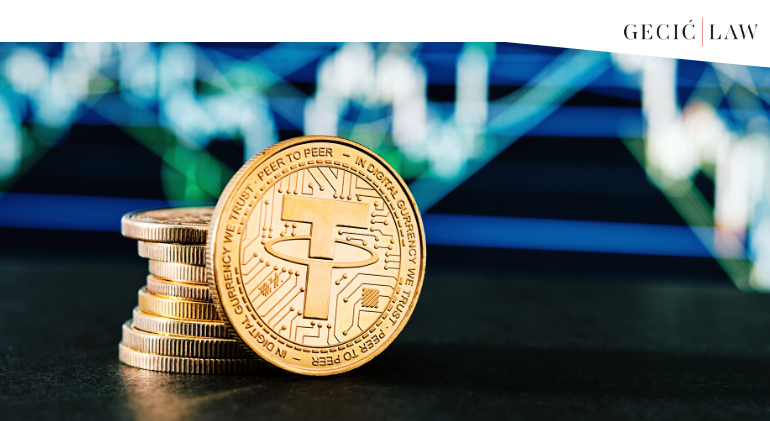

Technological development influenced capital markets far more than expected in the last decade. Decentralized currencies, central bank digital currencies and digital tokens are all huge news in the world of finance. And so are stablecoins.
Stablecoins are a unique kind of decentralized digital assets, developed to “bring the best of both worlds”. They have all the characteristics of decentralized currencies but also solve the problems of volatility and uncertainty. That makes them similar to centralized currencies. Stablecoins are unique because they are backed by real reserves. They are either backed by fiat currencies, other assets (securities, real estate, precious metals etc.) or decentralized digital currencies. However, they are always pegged to a currency. For example, if the value of a stablecoin is pegged to the US dollar, one unit of the stablecoin will be worth one US dollar.
The increase in the use of stablecoins brought huge discussions on potential regulations. Numerous countries and organizations are investing resources to come up with solutions, especially regarding the potential misuse of stablecoins for money laundering or terrorism financing. In 2020, the Bank for International Settlements acknowledged the risk and potential of stablecoins and started discussing their possible legislation, demanding rigorous control of digital assets. The US also considers this topic attention-worthy. Therefore, the US President’s Working Group on Financial Markets, the Federal Deposit Insurance Corporation, and the Office of the Comptroller of the Currency issued a Report on Stablecoins. The report gives huge significance to the FATF Updated Guidance for a Risk Based Approach from October 2021 which calls for the implementation of Anti-Money Laundering (AML) standards on virtual assets and virtual asset service providers. Hence, US legislators held a series of congressional hearings on stablecoins in late 2021 and Congress is expected to take action on stablecoins in 2022.
However, given the complexity of the topic, there is still no guarantee that regulations will be adopted soon.
The potential of digital currencies has been recognized. Just days ago, Visa announced it was partnering with blockchain company ConsenSys on a pilot project that aims to assist central banks in creating central bank digital currencies. The companies said they expect to cooperate with around 30 central banks on the pilot project which will be launched in the spring of 2022.
Earlier, Visa announced it would process transactions of the digital asset without converting it to fiat currencies first. This was done using USD Coin, a stablecoin running on Etherium. USD Coin is pegged to the US dollar and issued by Circle and Coinbase. To enable transactions, Visa created crypto debit cards. These cards allow for a digital asset to be transferred to the end-user account by converting it automatically.
The move was a huge step for companies doing business solely with crypto. If the pilot project goes as planned, VISA could potentially start developing central bank digital currency systems.
Although the global legislative framework on stablecoins is a hot topic, there are still no breakthroughs. However, it is expected that states will soon have some regulation guidelines so the future of money will be clearer.